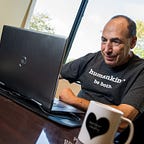The Calm Before The Storm
Are You headed for a trip to the unknown?
SPRING 2016- AS the summer of 2016 approached, I reached the end of my permitted visits at cardio-rehab and decided to avoid a re-hashing and possible confrontation with Dr. Williams about having a defibrillator inserted, basically reneging on the deal I had made with him. This was very unlike me, but I rationalized that it would make my life much easier by eliminating the drives to downtown New York City. I could just as easily see a cardiologist near home. Anna, one of my exercise rehab nurses, had recommended Dr. Fillman, of whom she said, “All of his patients seem to live ‘til 100 years old”. When I went for my first appointment, I found Dr. Fillman to be a wonderful, humble man who seemed to greatly enjoy caring for his patients. He was just as Anna had described. Dr. Fillman spent close to an hour with me that first visit, listening to my version of my heart condition. A whole hour! This was a welcome change after the “rush rush” of my appointments in the city. The version of the story which I told to Dr. Fillman was the one that came from the stoicism that had always been my own worst enemy. While he listened politely to my story, he decided that he would perform yet another stress echocardiogram. I knew inside my consciousness that the data from the test would tell the real story.
One week following my stress echocardiogram, I sat next to Dr. Fillman’s desk as he stared at his computer screen with long, quiet focus. He confirmed that my heart was not strong but suggested that he wanted a little more time to review the results of my test and consult with a colleague. I wondered if he was going to suggest the internal defibrillator as Dr. Williams had or perhaps another aortic valve replacement, in spite of the fact that I was functioning well! I was certain that I was right — that he would recommend treatment of my heart in the way of a procedure because he suggested I bring my wife to our next appointment.
I began readying myself for going back in for what would be my third valve replacement surgery. I delved into my Google research and saw that there was a Dr. Abrams who was the most renowned surgeon doing aortic surgeries by passing catheters through the large blood vessels the groin and also performing the most difficult mitral valve replacements. The mitral valve is much more difficult to operate on than the aortic valve because of it’s deep position within the heart. Mitral valve replacements were an especially risky endeavor. An artificial heart valve if placed incorrectly, would guarantee the death of the patient before they left the intensive care unit. I would only want the very best surgeon I could find.
When we went for my follow-up visit I introduced Shelley to Dr. Fillman and he could not have been more gracious. I was feeling comfortable as he once again quietly reviewed his notes and the computer screen for what seemed like forever but was probably only two minutes. “What would the verdict be — the ICD or the valve replacement ?” I wondered. While his voice was calm, he also seemed somehow uncomfortable this time. He gently told us that despite my seemingly decent ability to walk long distances on level ground, and my positive attitude…my chest x-ray, among other things showed that I had a very serious case of congestive heart failure caused by dilated cardiomyopathy. Dilated cardiomyopathy is a condition in which the heart becomes enlarged and cannot pump blood effectively. Symptoms vary from none to feeling tired, leg swelling, and shortness of breath — the last of these I certainly had on occasion and the swelling that was noticeable during an exacerbation that I had encountered during my time with Dr. Williams which resulted in a long weekend stay at NYU some months before this.
And then it happened.
Dr. Fillman raised his head, glanced at each of us and said the words that neither one of us ever thought we would hear: “You will need a heart transplant.”
The words were numbing but curiously, not alarming to me. My fate had been sealed. My life would be shortened after all, as I always thought down deep, that it might. When I looked over at Shelley, she was sobbing in a way that I had not seen very often. She was shocked by Dr. Fillman’s assertion. Completely blindsided. Nobody had used those words before and at no time was I faced in that direction. Dr. Fillman waited as she gathered herself and he said, “There’s nothing more that I am able to do for you, your condition is beyond the scope of my abilities and you should go to a heart failure center at this point- where they do heart transplants. There are two that I would recommend,” he continued, “Columbia Presbyterian and Mount Sinai”, both uptown in New York City. I’m going to call a longtime colleague of mine from my postgraduate training who is the chief of the heart failure department at Mt. Sinai. My recommendation should allow you to be seen by her very soon.”
On the ride home, Shelley and I were quiet- both seemingly on the same wavelength — that we were about to enter a new chapter in our lives. There was no denying as we returned to our car that we were headed for a trip into the unknown.
